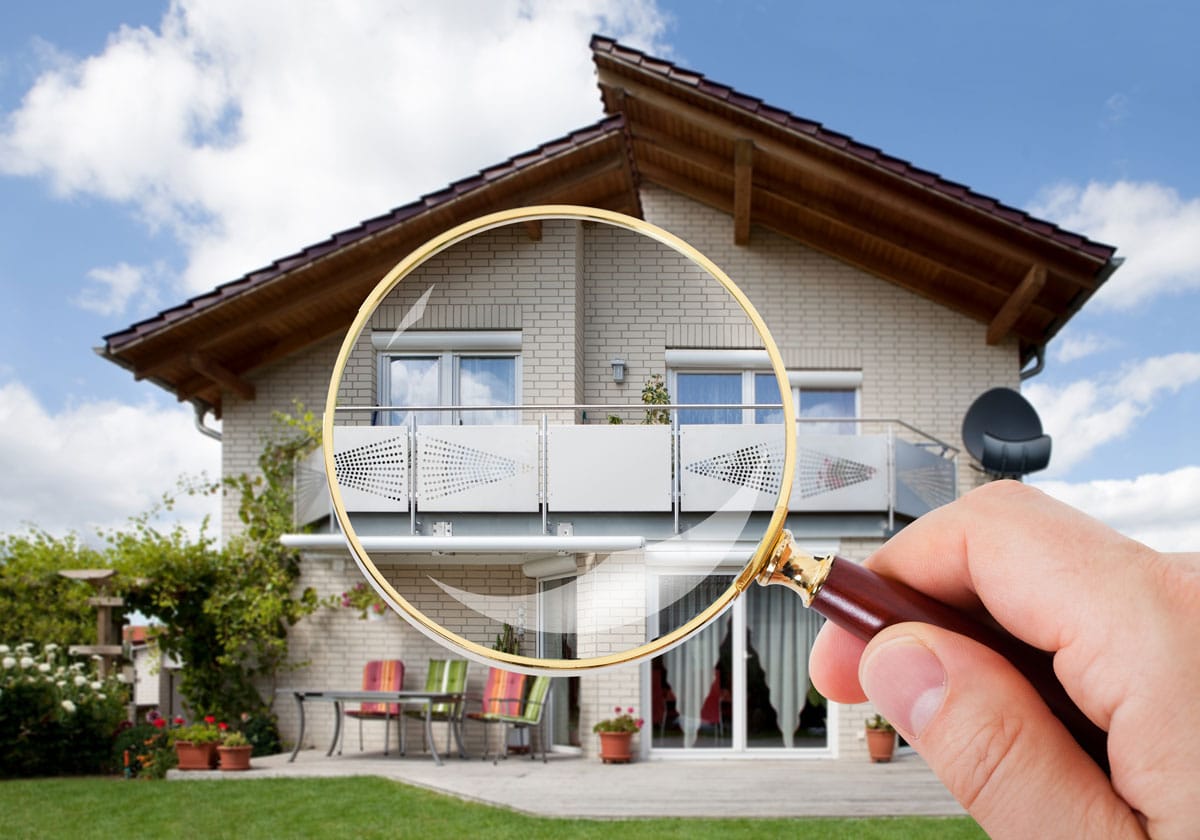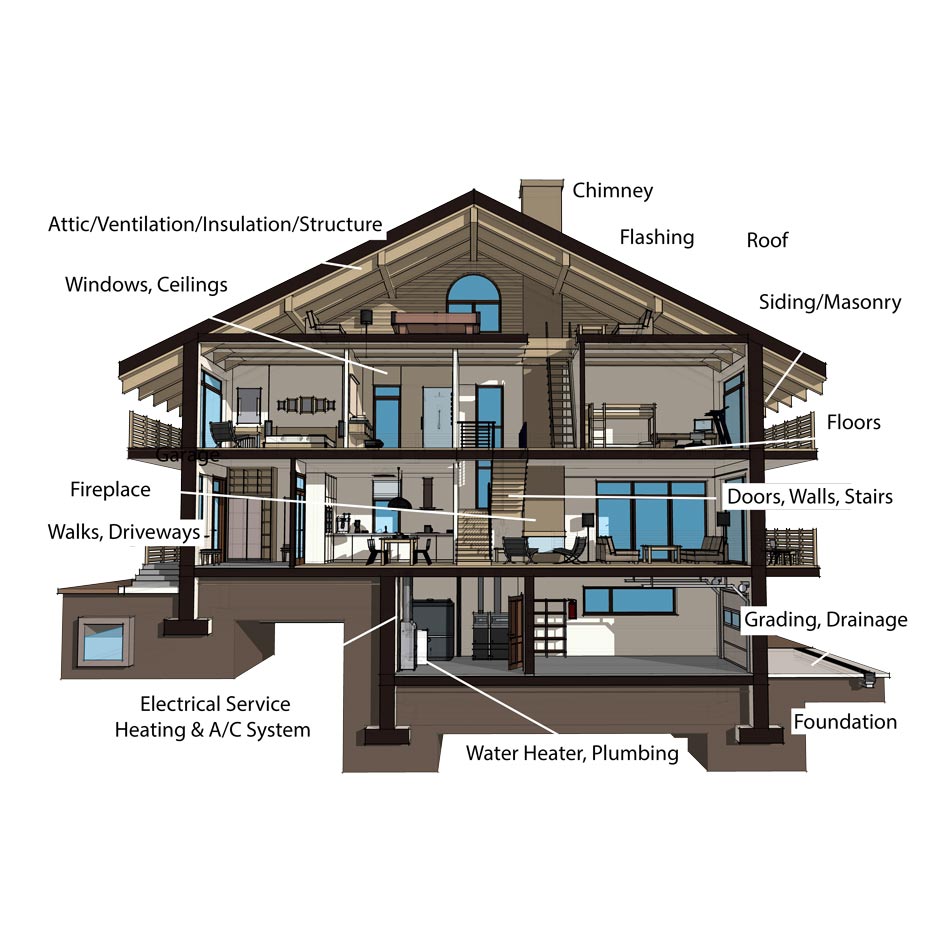Phoenix property inspections for residential and leased property evaluations
Phoenix property inspections for residential and leased property evaluations
Blog Article
What Is Included in a Comprehensive Property Inspection Refine?
A thorough building examination procedure is vital for making certain and protecting investments safety. It includes a meticulous analysis of structural stability, electric systems, pipes, and HVAC units, amongst various other essential components. What, then, are the most crucial aspects that can make or break a home evaluation?
Introduction of Property Inspection

The examination encompasses a number of essential areas, consisting of the outside and interior aspects, systems such as plumbing and electric, and any type of visible structural elements (Home inspections). During the process, the assessor documents the condition of these aspects, looking for indicators of wear, damages, or prospective risks
A comprehensive property assessment not only helps prospective customers make educated decisions yet additionally assists present owners in comprehending necessary repair services or maintenance tasks. By offering a thorough record of findings, the examination makes it possible for stakeholders to prioritize issues that might call for immediate focus or might affect future financial investment.
Additionally, a reliable evaluation procedure sticks to established market standards and standards, making certain a constant and reputable evaluation. On the whole, the home evaluation process is a crucial device in property deals, promoting openness and protecting both buyer and vendor passions.
Architectural Assessment

Throughout the evaluation, professionals analyze numerous elements, including the structure, framework, walls, and roof covering systems. They seek indications of resolving or moving, such as cracks in wall surfaces or irregular floorings, which can indicate underlying issues. The examination additionally involves analyzing the high quality of building materials and methods made use of, guaranteeing conformity with structure codes and standards.
Furthermore, assessors may look for indications of dampness intrusion, which can cause timber rot and mold, additional compromising architectural honesty. They additionally review load-bearing components to ensure they can properly support the weight of the structure and its components.
Eventually, a detailed architectural examination provides invaluable understandings for potential buyers and property owners, enabling them to make enlightened decisions relating to residential property investments and needed maintenance. By identifying architectural concerns early, owners can resolve problems proactively, maintaining the long-term value and safety of the building.
Electrical System Evaluation
An effective electrical system evaluation is vital in the residential property examination procedure, as it examines the safety, performance, and conformity of a building's electric facilities - Commercial property inspections. This analysis generally includes a detailed evaluation of the major electric panel, breaker, and circuitry systems. Assessors look for indicators of wear, rust, or damage my latest blog post that might jeopardize safety
The assessment consists of screening for adequate grounding and bonding, making certain that the electric system is correctly attached to stop electric shock or fire dangers. Assessors likewise evaluate the capability of the electrical system to handle the existing load, determining any potential overloading concerns that might result in blackouts or failings.
On top of that, the evaluation checks for the visibility of GFCI (Ground Fault Circuit Interrupter) and AFCI (Arc Fault Circuit Interrupter) gadgets in ideal areas, click this link which are essential for safeguarding versus electric shocks and avoiding fires. Conformity with local building codes and regulations is likewise verified to guarantee that any kind of installments or adjustments fulfill security criteria.

Plumbing and A/c Checks
Complying with the electric system analysis, the plumbing and heating and cooling checks are indispensable elements of the residential property evaluation process. These analyses ensure that the vital systems of the residential or commercial property are operating correctly and safely, therefore shielding the financial investment and wellness of the residents.
Throughout pipes inspections, specialists assess the condition of pipelines, components, and drainage systems. They inspect for leaks, corrosion, and any type of indicators of water damage that could show bigger issues. The efficiency of water heating units is also evaluated to ensure they fulfill present requirements and give ample hot water supply.
The a/c checks include a thorough evaluation of ventilation, home heating, and air conditioning systems. Assessors will review the functional effectiveness of these systems, making certain that they preserve a comfortable interior atmosphere. This consists of inspecting the furnace, air thermostat, conditioner, and ductwork functionality. In addition, the assessor will search for any kind of signs of wear or potential safety and security risks, such as carbon monoxide gas leakages in heater.
Exterior and Interior Examinations
Outside and interior assessments are vital elements of the home assessment procedure, providing a thorough review of a building's problem. The outside assessment involves reviewing architectural elements such as the roofing system, home siding, structure, and windows. Inspectors search for indicators of wear, damage, or potential hazards, consisting of water intrusion, mold and mildew growth, and bug problems. best site They additionally assess the bordering landscape, making certain correct drain and identifying any kind of trees or greenery that may endanger the residential property.
The indoor examination concentrates on the problem of living spaces, consisting of walls, floor covering, and ceilings. Assessors analyze the capability of home appliances, windows, and doors, while likewise inspecting for indicators of wetness or structural problems. Electrical systems, pipes fixtures, and a/c units are inspected to guarantee they remain in functioning order, certified with building regulations, and without safety and security dangers.
Both examinations finish in a comprehensive record that highlights important findings and recommendations for repairs or additional evaluations. This twin approach makes sure that prospective buyers or proprietors are fully informed concerning the residential or commercial property's strengths and weaknesses, enabling them to make knowledgeable choices.
Conclusion
Finally, a comprehensive home examination process encompasses a substantial assessment of structural honesty, electrical systems, plumbing, and heating and cooling units, together with in-depth outside and indoor evaluations - Phoenix property inspections. By systematically assessing each critical element, possible security dangers and compliance with industry criteria and regional building ordinance can be recognized. The resultant thorough record works as an important resource, equipping buyers and home owners to make educated choices concerning residential or commercial property investments and upkeep, inevitably improving safety and value
A comprehensive home assessment process is crucial for protecting investments and making certain safety.Throughout the assessment, professionals analyze different elements, including the foundation, framework, walls, and roofing systems.An effective electrical system analysis is essential in the home evaluation procedure, as it assesses the security, performance, and conformity of a building's electrical facilities.Exterior and indoor examinations are essential aspects of the residential property inspection procedure, offering an extensive summary of a building's condition.In verdict, a detailed residential or commercial property assessment process encompasses an extensive assessment of architectural honesty, electrical systems, pipes, and Heating and cooling devices, alongside detailed exterior and indoor evaluations.
Report this page